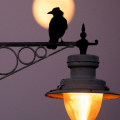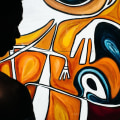Capturing beautiful images in the dark or in black and white can be a difficult endeavor. However, with the right lighting conditions, photographers can create stunning shots that bring out the best of their subject. Whether you are shooting at night or using black and white film, choosing the right lighting conditions is essential to capturing great images. In this article, we will explore the best lighting conditions for night and black and white photography, helping you create stunning photos every time.
Using a Tripod
When taking photos in low light conditions, a tripod is an essential tool to ensure the best quality results.Tripods provide stability and help avoid camera shake or movement during long exposures. A tripod also allows the photographer to adjust the camera angle and distance with precision to capture the desired image. Furthermore, a tripod helps to keep the camera steady and level when using a slow shutter speed for night photography, making it easier to achieve sharp images. Using a tripod also allows the photographer to make multiple exposures without having to adjust the camera each time. This can be helpful when shooting night or black and white photography, as it allows for experimentation with various exposure settings.
Additionally, using a tripod can be useful for taking multiple shots of the same scene at different angles and focal lengths. This is especially important for black and white photography, where different angles can create dramatic effects.
Direction of Light
When taking photos in low light, it is important to consider the direction of the light. This is because the direction of the light can have a huge impact on the quality of the photo. If the light is coming from the wrong direction, it can create shadows, dark spots, and even blurriness.Additionally, the direction of the light can influence the atmosphere and mood of the photo. For example, if you want to capture a dramatic night sky, you should choose a light source that will create a strong contrast between the sky and the foreground. When taking black and white photographs, it is particularly important to consider the direction of light, as it can affect how details are shown in the photo. For example, if you are trying to capture a stunning night sky, using a backlighting technique can help bring out subtle details and create an interesting contrast between dark and light tones. In conclusion, choosing the right lighting conditions for night and black and white photography requires careful consideration of the direction of the light. Taking into account how the light will affect details and atmosphere can help you achieve stunning results.
Intensity of Light
When taking photos in low light, it is important to consider the intensity of the light.Different lighting conditions can create different effects in your photos, and choosing the right intensity of light can make or break a photo in night or black and white photography. Intensity of light refers to the amount of light emitted from a source, and it can be determined by the wattage, lumens, or lux of the light source. Using too bright a light can cause unwanted overexposure and wash out your photo, while using too dim a light can cause your photo to be underexposed and lacking detail. When choosing the right intensity of light for night and black and white photography, you need to consider the type of light source you will be using. Natural light is often the best choice for night and black and white photography, as it provides a softer and more even illumination than artificial lights.
However, if you are taking photos indoors or in a studio setting, you may need to use artificial lights to achieve the desired effect. If so, you should pay close attention to the wattage of your lights in order to achieve the right intensity of light. The amount of light you use will also depend on the type of photo you are taking. For night photography, you may need brighter lights than for black and white photography. If you are using artificial lights, you should adjust the wattage according to the scene you are shooting in order to get the desired effect.
Finally, if you are using natural light, you should take into account any factors that may affect the intensity of the light, such as clouds or moonlight. By carefully considering the intensity of light when taking photos in low light conditions, you can ensure that your photos have the perfect level of exposure and detail.
Types of Light
When taking photos in low light, there are a variety of lighting options that can be used to create stunning results. Depending on the type of photo you are taking and the atmosphere you are hoping to create, different types of light can be used. Natural lights such as the sun, moon, and stars can be used to create a unique and beautiful effect for night and black and white photography. Artificial lights such as flashlights, studio lights, and even LED lights can also be used to illuminate a scene.Natural light often provides a more organic feel to a photo and can create stunning results without additional equipment. The sun is the most common source of natural light and can be used in a variety of ways. Depending on the time of day, the sun can be used to create a dramatic backlight for a portrait or provide a softer light for landscapes. The moon and stars can also be used to create an interesting night-time atmosphere.
Artificial lighting is often necessary when taking photos in low light conditions. Flashlights, studio lights, and LED lights can provide powerful illumination when natural light is insufficient. Flashlights are often portable and can be used to light up specific areas or objects within a scene. Studio lights are often more powerful and provide more control over the light being used.
LED lights are often more energy efficient than other types of lighting and can be used to create unique effects. Choosing the right lighting conditions for night and black and white photography is essential for creating stunning results. Natural light sources such as the sun, moon, and stars can provide a unique atmosphere while artificial lights such as flashlights, studio lights, and LED lights can provide powerful illumination. Taking photos in low light can be challenging, but with careful planning and consideration of the lighting conditions, night and black and white photography can be made easier. Consider the type of light you will use, the intensity of the light, and the direction of the light when selecting the right lighting conditions for your photography.
Additionally, using a tripod and remote shutter release can help to ensure that you get a sharp image. With these tips in mind, you can create stunning night and black and white photos.








